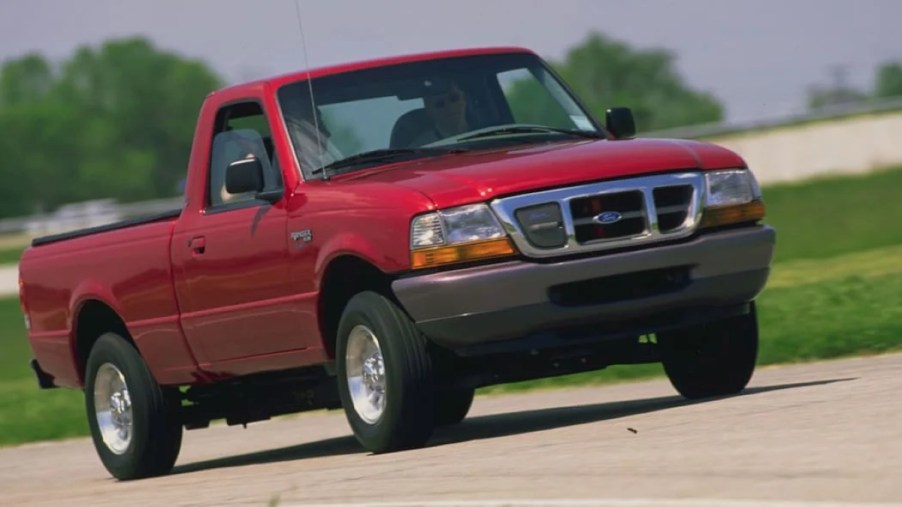
4 Weird Early EVs You’ve Probably Never Heard Of
Electric vehicles are taking over today, but the genesis of this technology didn’t start with Tesla. By the late 1990s, mainstream automakers were already dabbling with EVs by converting some of their most popular cars. Limited range and charging made these niche products untenable at the time. But in many ways, these models paved the way for the EV push we see today.
1997 Toyota RAV4 EV
Notably, there are two generations of RAV4 EV. It’s easier to remember the run produced from 2012 to 2014, but the first RAV4 EV actually came 15 years earlier. In 1997, Toyota sold an electric-powered RAV4 as a fleet vehicle in limited numbers. By 2001 it was commercially available, and by 2003 even the public could buy one.
The first RAV4 EV was good for 95 miles of range and was among the first vehicles with a single-speed transmission attached to an electric motor. From a full charge, the RAV4 EV took a glacial 18 seconds to reach 60 mph and took 5 hours to recharge.
1997 Chevy S-10 Electric

Today we have the Chevy Colorado, but in the 1990’s the S-10 was Chevy’s midsize pickup. It was one of the most popular small trucks at the time and became the world’s first electric pickup truck with the S-10 Electric in 1997.
Like the RAV4, it was sold mostly as a fleet vehicle, though private citizens could buy one as well. Of the 492 S-10 Electric trucks sold, 440 went unsold and were eventually scrapped.
Powered by a heap of regular car batteries, the Chevy S-10 Electric was good for just 45.5 miles in the city or 60 miles when traveling at midrange speeds. Governed to 70 mph, the S-10 was more about intracity deliveries than any long-range boat hauling.
Even with that limited use case in mind, it’s not hard to understand why so many S-10 EVs met the scrapyard.
1998 Ford Ranger EV
Not wanting to be left out of the conversation, Ford released the Ranger EV in 1998. This, of course, meant it was the second-ever electric pickup truck, and to Ford’s credit, it was a slightly better version of the concept.
At 90 horsepower, the Ranger EV made it to 50 mph two seconds faster than the electric S-10. And with an average range of 65 miles, it could outlast the Chevy pickup as well. What’s more, Ford switched to Nickel Hydride batteries for the second year, offering improved range and performance. By then, the Ranger EV could get to 50 mph in just over 10 seconds.
2007 AC Propulsion eBox

OK, this one isn’t technically from the 90s, but I’m an elder millennial, so anything before 2010 feels like 1994 to me. Anyway, I’m including the AC Propulsion eBox because its ideation began well before the company started converting Scion xBs to electric power in 2003.
After producing the Tzero, AC Propulsion wanted a more mainstream electric vehicle to draw public attention. The eBox was born…and then that was about it.
It had a purported top speed of 95 mph and could get to 60 mph in seven seconds. In addition, it was one of the first commercially-available electric vehicles to use the Lithium battery technology we see today.
Good for 200 horsepower and up to 180 miles of range, it offered fairly normal performance when compared to gas-powered cars of the day. AgingWheels managed to get his hands on a defunct eBox in 2022 and found it to be surprisingly sprightly.
You can still find the odd eBox on roads today. The University of Delaware even has a few as fleet vehicles. Overall though, the high costs meant it never left niche status.
Early EVs were challenged but promising
That automakers experimented with EVs so early on seems surprising now. But it also paints a picture of how long this technology has been in the works. So the next time you hear someone say that the Nissan Leaf was the first EV on the market, you can be the life of the party with these for early, esoteric EVs.




